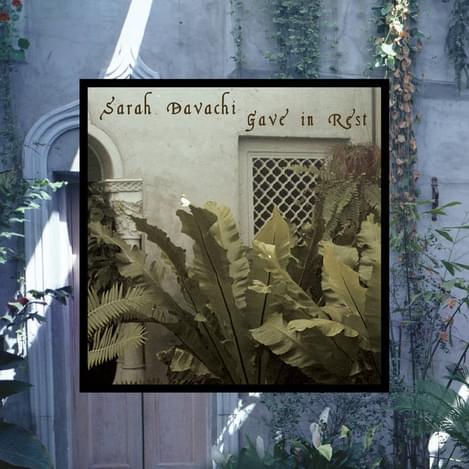Sarah Davachi's Gave in Rest updates traditional ideas to stunning effect

Such is the case here, as multi-instrumentalist Sarah Davachi recognizes that some raw textures of early sacred and secular music can be the bases of new pieces that, though clearly acknowledging their origins, never descend into mere pastiche.
The late 1960s-early '70s revival of interest in medieval music, prompted to a great extent by David Munrow and his Early Music Consort, then led on to a growing appreciation for the output of the Baroque period played on original instruments from that time. This “authenticist” movement, although occasionally a little strident, nevertheless contributed to an increased understanding of how music was played and received across the centuries. Many of the finest twenty-first century interpreters of Mozart and Beethoven, for instance, have had their approach to these composers evolve out of an awareness of the soundscapes of pre-modern ages. Furthermore, the ever-growing fascination with the life and work of the twelfth century abbess Hildegard of Bingen owes much to a celebrated 1983 recording by Gothic Voices, A Feather on the Breath of God.
All this is by way of giving some idea of how Sarah Davachi’s record, structured as it is along the lines of the monastic day (Matins, Evensong etc.), takes its place in 2018 as the most recent evocation of centuries-old compositional styles, pushing the sound of old and new instruments (flute, recorder, mellotron, violin and synthesizer, inter alia) into hitherto barely explored areas. Here, the more drone-like sounds hark back to medieval plainchant while the more complex layerings of effects call to mind compositions of renaissance polyphony.
Opener “Auster” began life as a recorder melody, then treated with tape delay to produce a piece with remarkable resonance far beyond the bareness of the original basis. “Evensong” makes the most of overdubbed singing subsequently worked through the kind of plate reverberator made famous by the Sausalito recording studio (of 1970s Fleetwood Mac vintage). This leads to a final version of the track that has an almost all-engulfing depth; strangely apt in view of the significance of intense (spiritual) immersion as part of the life of a fifteenth century monastic community. Subtle use, here and there, of piano provides well-timed adjustments to the musical texture before more pronounced piano worked through an Echoplex tape delay creates sonorous church bell effects that open up the sound on “Gloaming”.
This is an album that has developed from careful study of, and attention to, how sacred music could define time and enrapture the spirit in past ages; and how it still offers up its potential to a twenty-first century sensibility when treated with technology and with reverential respect.
Get the Best Fit take on the week in music direct to your inbox every Friday

Prima Queen
The Prize

Femi Kuti
Journey Through Life

Sunflower Bean
Mortal Primetime





